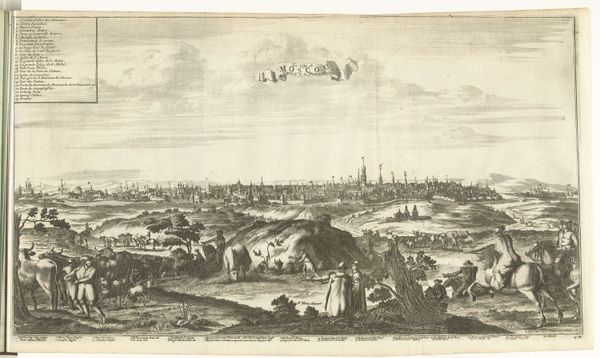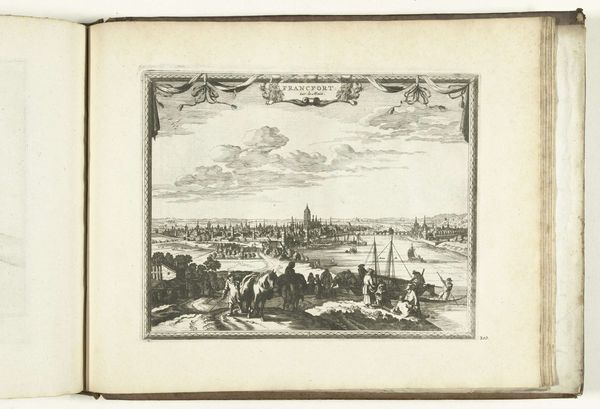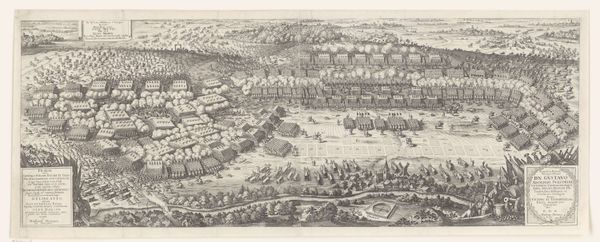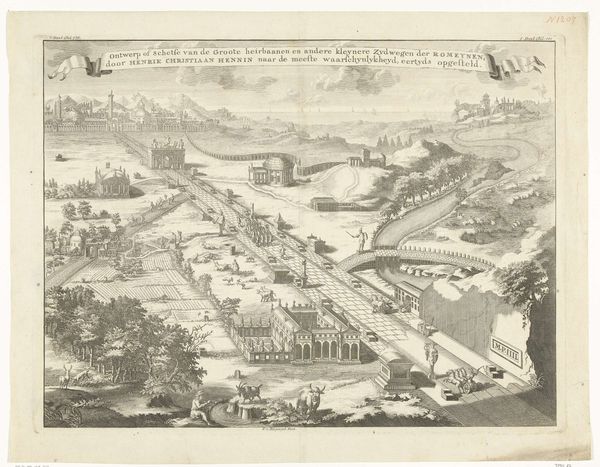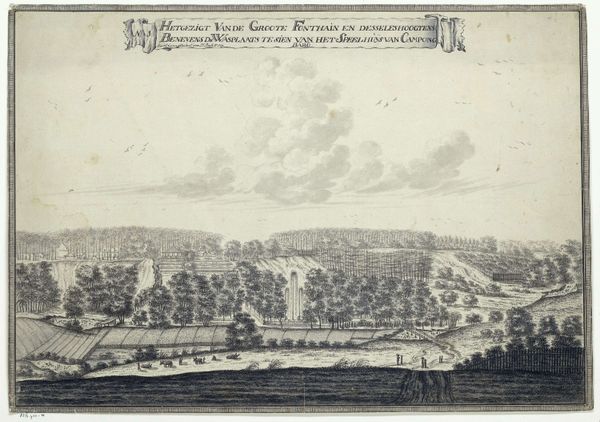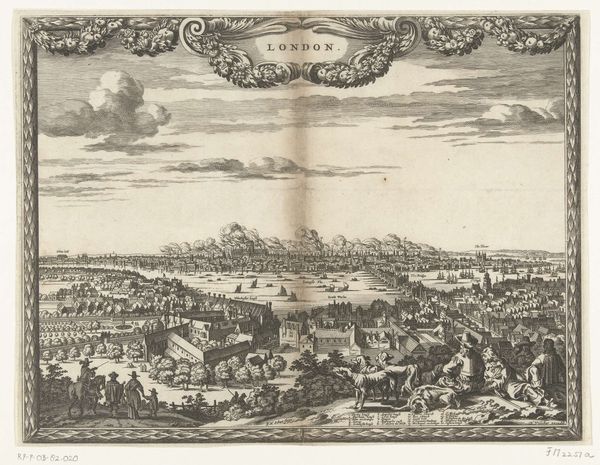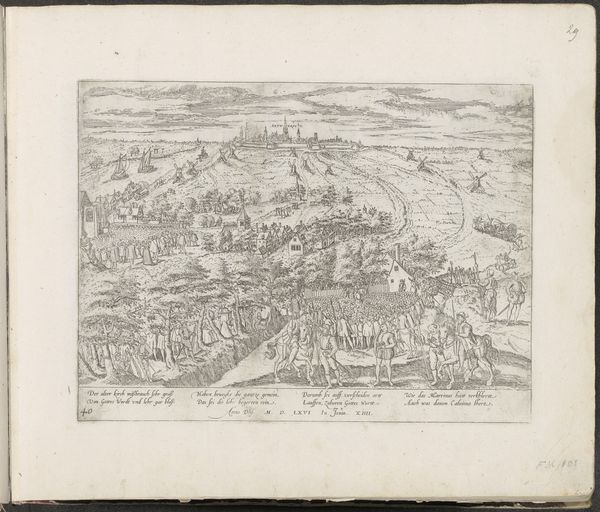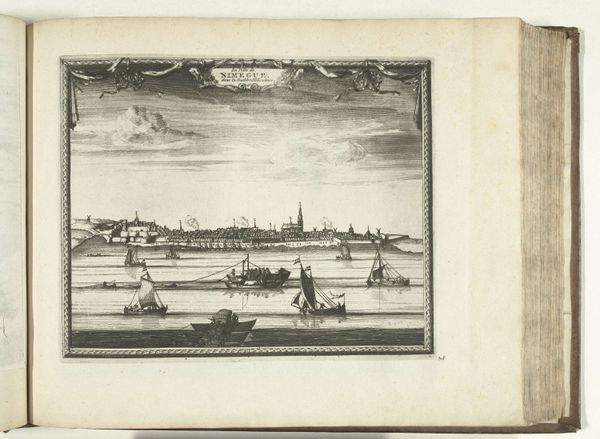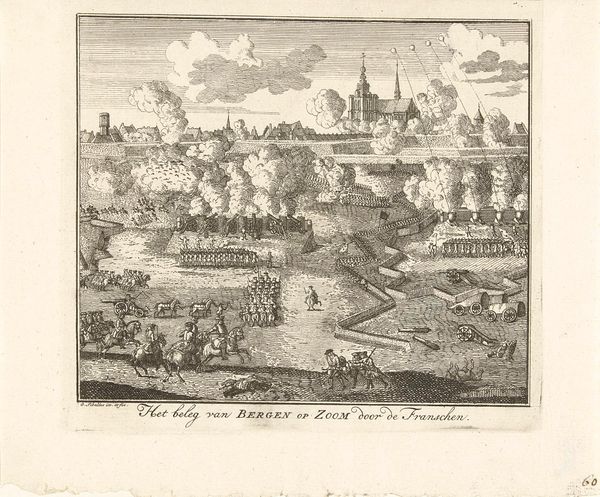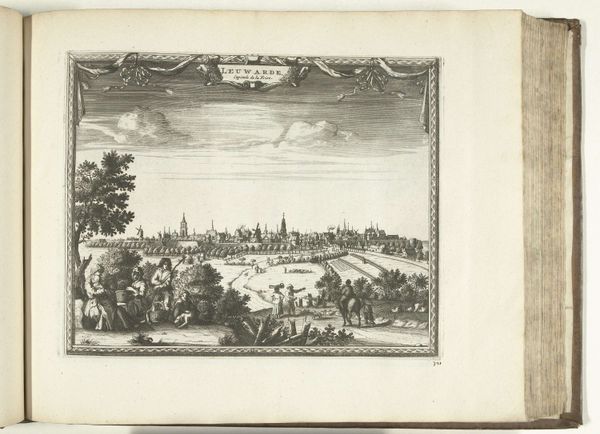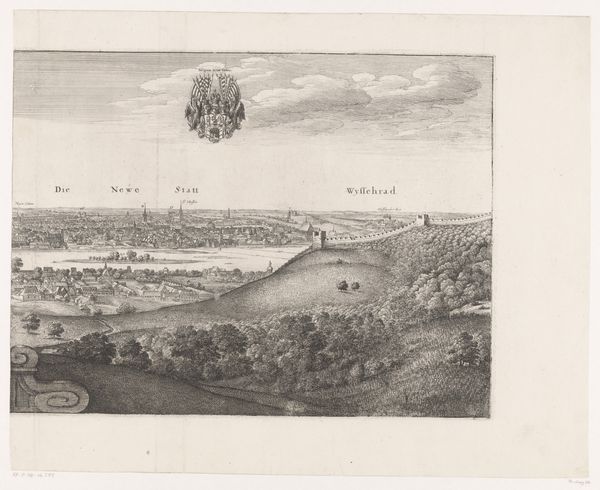
print, engraving
#
baroque
# print
#
old engraving style
#
landscape
#
cityscape
#
engraving
Dimensions: height 226 mm, width 555 mm
Copyright: Rijks Museum: Open Domain
Curator: Today, we’re looking at “Gezicht op Marseille, 1726,” an engraving housed right here at the Rijksmuseum. It offers a detailed cityscape of Marseille as it appeared in the early 18th century. Editor: It strikes me immediately as an exercise in meticulous detail. You can almost feel the labor embedded in those precise lines that compose the architecture. A huge amount of care was taken, using printed lines to communicate scale, I suspect. Curator: Indeed. Consider the emblematic importance of Marseille itself. This print serves as a powerful symbol of French maritime power and prosperity. Cityscapes were frequently commissioned to showcase civic pride, acting almost as promotional material. Note the placement of "La Ville de Marseille" on a flowing banner. Editor: It also makes me think about the material cost associated with prints like this. Paper wasn’t exactly cheap. An engraving of this scale would likely serve an administrative, trade, or courtly clientele and was intended for a patron who understood its financial value, and had an emotional connection to the depicted landscape. Curator: Absolutely, engravings were often distributed among the wealthy elite. It highlights their ownership of the city and its benefits, while the inclusion of identifiable religious buildings connects to civic and personal identity. You have Notre-Dame de la Garde as a symbol of faith, or the docks that act as a symbol of commerce. These things carried significant cultural and psychological resonance for people familiar with the town’s symbols. Editor: I find it particularly interesting how the labor involved in engraving—a meticulous and repetitive process—mirrors the social and economic structure of Marseille at the time: layers of industry, mercantile precision. The material connects quite directly with the scene presented. It feels intentional. Curator: Perhaps. Overall, a piece like this also provides an invaluable glimpse into the early 18th century imagination and cultural values. Editor: It's quite an elegant combination of utility and image production. Very informative!
Comments
No comments
Be the first to comment and join the conversation on the ultimate creative platform.
